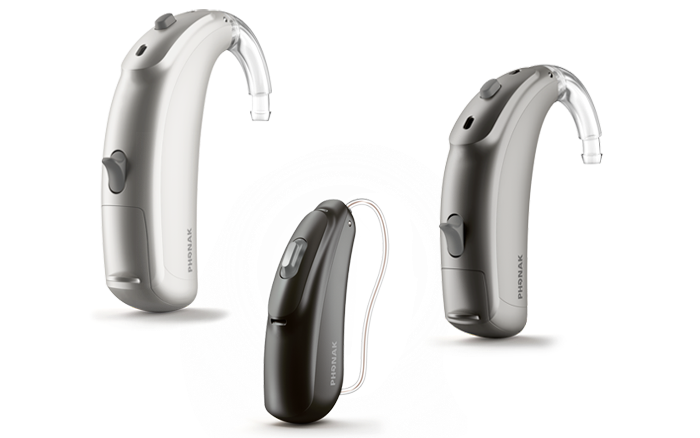
FAQs - Naída B
Why does the severe to profound hearing loss definition start at 61 dB hearing loss?
The severe to profound hearing loss is defined by the World Health Organization (WHO) as average hearing thresholds equal to or greater than 61 dB hearing loss in the better ear.
Why 61? For sensorineural hearing, the maximum hearing loss resulting from damage to the outer rows of cochlear hair cells is around 60 dB (Moore 2016). If the sensorineural hearing thresholds are greater than 60 dB hearing loss then a loss of inner hair cells is also very likely. This results in a large variability in speech recognition skills in quiet and in noise and the likely benefit of amplification will range from good to poor.
What are three key characteristics of severe to profound hearing loss?
Three key characteristics are:
- Loss of auditory resolution ability
- Loss of high frequency hearing
- Loss of signal-to-noise ratio
What is slow compression?
Slow compression has slow attack and especially release times, which means the gain remains constant for more of the time, resulting in a system which behaves more like a linear system. In slow compression typical attack and release times fall between 5 s and 20 s (Moore, 2015).
What is the advantage of slow compression?
A key advantage of slow compression is that the temporal envelopes of the signal are preserved. This means that the loudness contrast between loud and soft sounds that is present in the unamplified signals is maintained. This is important for speech intelligibility for some listeners (Moore, 2016; Madsen et al, 2015).
What is Adaptive Phonak Digital Contrast?
Adaptive Phonak Digital Contrast, or APD Contrast, is an alternative fitting formula which provides slow compression. It is like Adaptive Phonak Digital with slow time constants or slow attack and release times, plus some minor change to the frequency response curve. Adaptive Phonak Digital Contrast is found in the Fitting Formula Tab in Phonak Target 5.3.
For whom should APD Contrast be considered?
For clients who do not cope well with compression, or for clients with poor auditory resolution abilities, such as those with speech discrimination poorer than expected for the audiogram configuration APD Contrast must be considered.
Why offer SoundRecover2 to clients with a severe to profound hearing loss?
SoundRecover2 has been shown to significantly improve the audibility of high frequency sounds for people with profound high frequency hearing loss.
Is there a difference between the Roger and directional in Naída V and in Naída B?
Yes, the new Roger and directional setting in Naída B is activating the directional hearing aid setting at an even lower noise level, thus providing the benefit of Roger and directional in even more listening situations.
What is the benefit of Roger and directional?
Roger and directional does not only improve speech intelligibility in noise in the near field, it improves speech understanding in the far field as well.
(Latzel, M., Wagener, K. C., Vormann, M., Mülder, H.E. (2017). Speech Intelligibility in Dual Task with hearing aids and adaptive digital wireless microphone technology. In ISAAR proceedings.)
Why do Naída B clients need Roger?
Beyond the distance of 1.5 meters (5 feet) hearing aids, even the most advanced, have limitations in providing an improvement in the signal-to-noise ratio, which is a prerequisite for speech understanding. State-of the art Roger microphones are therefore required to bridge the understanding gap. With Naída B and Roger, clients with a severe to profound hearing loss get the best solution for communication nearby and over distance, in quiet and noise.
What is the Roger solution for Naída B-R RIC?
For Naída B-R RIC, the ComPilot II with an attached Roger X receiver can be used in combination with any Roger microphone.

